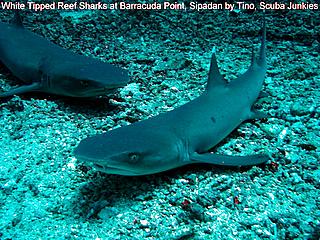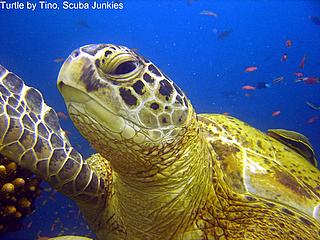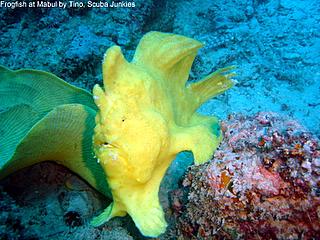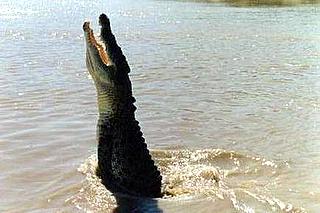 There’s a well trodden
“tourist” route in Sabah, Borneo. Most people
arrive in KK (Kota Kinabalu), from mainland Malaysia or Brunei. The
usual route is to make the 1 night 2 day climb of Mt Kinabalu, scoff at
seeing the ‘circus’ of orang-utans at Sepilok, (but
still go,) do a jungle trek (complete with leeches when it rains) at
Kinabatangan, and end up diving around Sipadan. The Beetle however,
obviously a wuss, headed direct from KK for the delightful town of
Semporna to go diving around Sipadan.
There’s a well trodden
“tourist” route in Sabah, Borneo. Most people
arrive in KK (Kota Kinabalu), from mainland Malaysia or Brunei. The
usual route is to make the 1 night 2 day climb of Mt Kinabalu, scoff at
seeing the ‘circus’ of orang-utans at Sepilok, (but
still go,) do a jungle trek (complete with leeches when it rains) at
Kinabatangan, and end up diving around Sipadan. The Beetle however,
obviously a wuss, headed direct from KK for the delightful town of
Semporna to go diving around Sipadan.
I am told that Semporna translates from Malay to mean
‘beautiful’. Beautiful it ain’t.
It’s a small place clustered around the sea front, spilling
up a small hill where a motley collection of shops, two budget hotels,
an internet café, one KFC, a Courts Mammoth, Maybank, a
supermarket and the mini van terminus can be found. Down the slope by
the sea there are fish markets (upsettingly selling manta rays, blue
spotted rays and sharks amongst the usual tuna etc.,) lots of small
rickety wooden stalls with people selling water melons, small plastic
bags of tomatoes, durian, bananas, rambutans, small piles of chillies,
ginger and the like. The road from the top of the town leads via a
small roundabout with a rusting sculpture of a marlin in a circle down
a small incline to the central market and wharf. The road is broken up,
badly pot holed and largely comprises rough gravel. Partially open
culverts run by the side of the roads.
 The place stinks and you have to pick your way around
gaping holes in the pavement and road, steel girders stretched across
the pavement and road, debris from semi abandoned buildings and
rubbish: decomposing food, dead animals and plastic bags abound.
Several divers came a cropper on any one/combination of the above and
hurt themselves – and this on land and not in the sea.
The place stinks and you have to pick your way around
gaping holes in the pavement and road, steel girders stretched across
the pavement and road, debris from semi abandoned buildings and
rubbish: decomposing food, dead animals and plastic bags abound.
Several divers came a cropper on any one/combination of the above and
hurt themselves – and this on land and not in the sea.
Opposite the wharf, there’s the Dragon Inn
budget hotel, a collection of long houses on stilts in the sea. To the
right of that is the somewhat posher Seafest Hotel and cafe. In between
there’s a small collection of dive operations.

I arrived during Ramadan, a time when there are a lot
of dusty fruit and veg stalls during the day but the supermarket is
closed until 7pm. The KFC was not doing a great deal of business during
the day either, though there is a large Chinese population in Semporna
and they were not fasting and could be found sitting in the kedai kopi
– coffee shops. After 6.30pm, the local Malays broke their
fast and sat in open air restaurants watching violent movies whilst
feral cats fought beside for scraps of food. The owner of the place I
stayed at, Lees Rest House gave me his views on Semporna, but not first
without complaining how hard it was to do business as a Chinese person
in Malay society. I was told that there were many illegal Filipino
people, as Mindanao, in the south of the Philippines is close by.
You may wonder, from my description of Semporna, why I
stayed there. Simple: because this is the best place to stay to go
diving around Sipadan. The alternatives are to go and stay in one of
two very swish resorts on Mabul – too expensive for me
– one quoted me £1,100 for 7 days’ diving
and accommodation, and the other is even more expensive. Another option
is to stay in a long house on Mabul, which I did think about as it
would mean that I could sleep in a little until the dive boat arrived
from Semporna, but, being a Beetle, I decided to stay in my small but
clean and air con’d room at Lees Guest House for 40 Ringits a
night – about £6 and that I could run the twice
daily gamut of hisses and whistles from the local men whilst walking
down to the dive shop and back. They’ve obviously not seen a
Beetle before.

A small oasis in the town called Semporna is a dive
shop called Scuba
Junkies, complete with fury creature Ewok, a white gangling
ball of walking fluffiness. I did 21 dives with Scuba Junkies over
seven days and can recommend them whole heartedly; they were
professional, safe and fun to be with. The diving around Sipadan more
than made up for staying in Semporna, which faded into insignificance
compared to the sharks, turtles and reef fish I saw.
Sipadan diving really is world class diving. One dive
site called Barracuda Point has so many resting sharks on sandy slopes
and turtles that it is easy to become blasé about them. We
also saw small schools of barracuda too, and I saw two leopard sharks,
my first sighting ever. March/April time there are sometimes schools of
hammerheads sharks. At times there are so many turtles that you have to
get out of their way as they ease of their ledges or move from sandy
patches. This is not necessarily deep diving, you can see all you hope
to at less than 25 metres; yes, sometimes, there were strong-ish
currents but nothing too difficult and on top of the reef at between 9
and 5 metres there was always a myriad of hundreds of reef fish.

There’s macro diving too, if that is your
thing. I felt so in awe of the ‘big stuff’ around
Sipadan that I did not want to miss out on that so only made three
macro dives around Mabul. On one dive, around the pillars supporting an
old oil exploration rig that is now the Sea Ventures floating hotel, at
around 12 metres underneath a pile of iron girders is the most enormous
moray eel I have ever seen. He is called Elvis, though I
don’t know why. On the macro dives, we saw frog fish,
scorpion leaf fish, juvenile sweetlips and there are sea horses, though
I did not see one.
All of the photos in this article were kindly given to
the Beetle by Tino, dive instructor, and one of the owners of Scuba Junkies.

 There’s a well trodden
“tourist” route in Sabah, Borneo. Most people
arrive in KK (Kota Kinabalu), from mainland Malaysia or Brunei. The
usual route is to make the 1 night 2 day climb of Mt Kinabalu, scoff at
seeing the ‘circus’ of orang-utans at Sepilok, (but
still go,) do a jungle trek (complete with leeches when it rains) at
Kinabatangan, and end up diving around Sipadan. The Beetle however,
obviously a wuss, headed direct from KK for the delightful town of
Semporna to go diving around Sipadan.
There’s a well trodden
“tourist” route in Sabah, Borneo. Most people
arrive in KK (Kota Kinabalu), from mainland Malaysia or Brunei. The
usual route is to make the 1 night 2 day climb of Mt Kinabalu, scoff at
seeing the ‘circus’ of orang-utans at Sepilok, (but
still go,) do a jungle trek (complete with leeches when it rains) at
Kinabatangan, and end up diving around Sipadan. The Beetle however,
obviously a wuss, headed direct from KK for the delightful town of
Semporna to go diving around Sipadan.  The place stinks and you have to pick your way around
gaping holes in the pavement and road, steel girders stretched across
the pavement and road, debris from semi abandoned buildings and
rubbish: decomposing food, dead animals and plastic bags abound.
Several divers came a cropper on any one/combination of the above and
hurt themselves – and this on land and not in the sea.
The place stinks and you have to pick your way around
gaping holes in the pavement and road, steel girders stretched across
the pavement and road, debris from semi abandoned buildings and
rubbish: decomposing food, dead animals and plastic bags abound.
Several divers came a cropper on any one/combination of the above and
hurt themselves – and this on land and not in the sea. 


 More
pairs of orange marbles appeared hovering in the darkness ahead of us.
There must have been at least a dozen. No doubt, the buggers were
thinking, food, succulent live food of all shapes and sizes, all
waiting for an underwater roll. I was glad they were all over there and
we were here.
More
pairs of orange marbles appeared hovering in the darkness ahead of us.
There must have been at least a dozen. No doubt, the buggers were
thinking, food, succulent live food of all shapes and sizes, all
waiting for an underwater roll. I was glad they were all over there and
we were here. 

